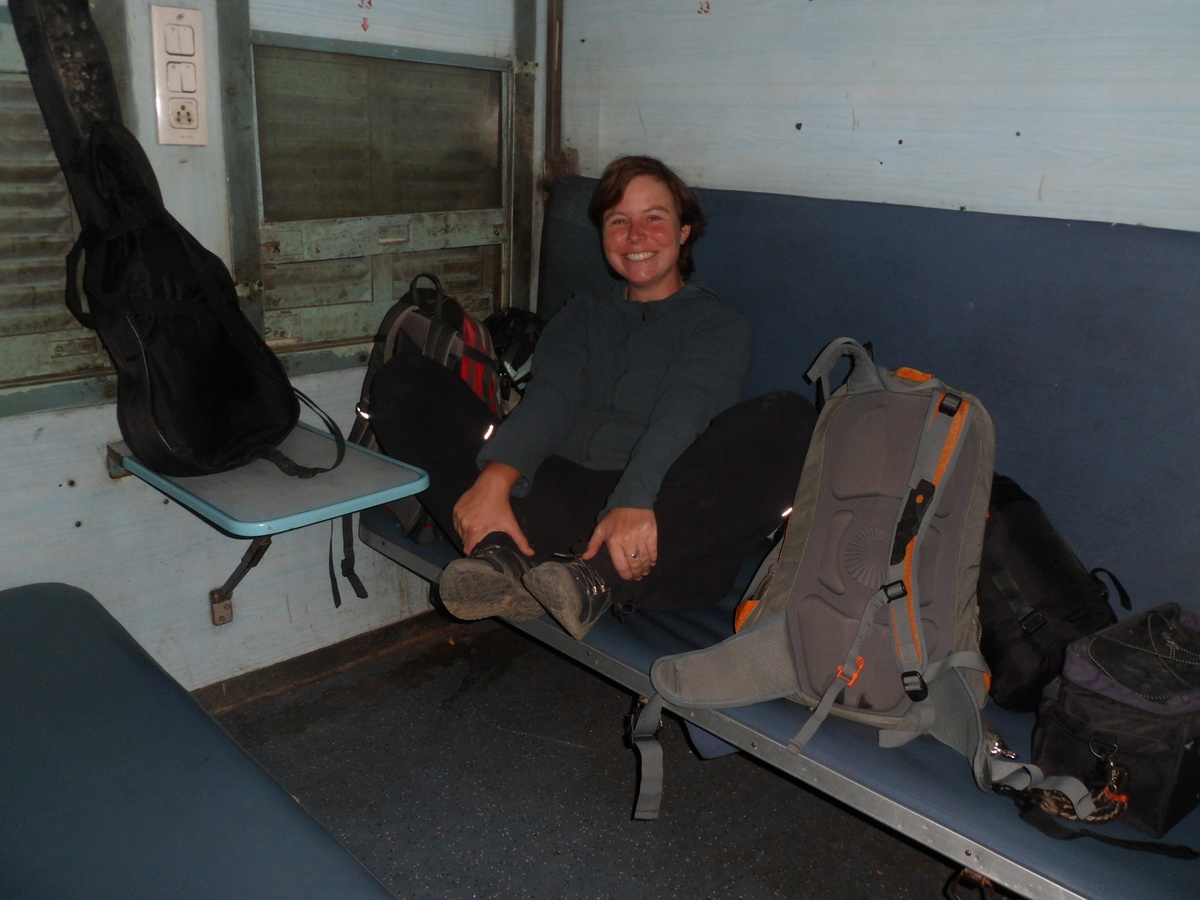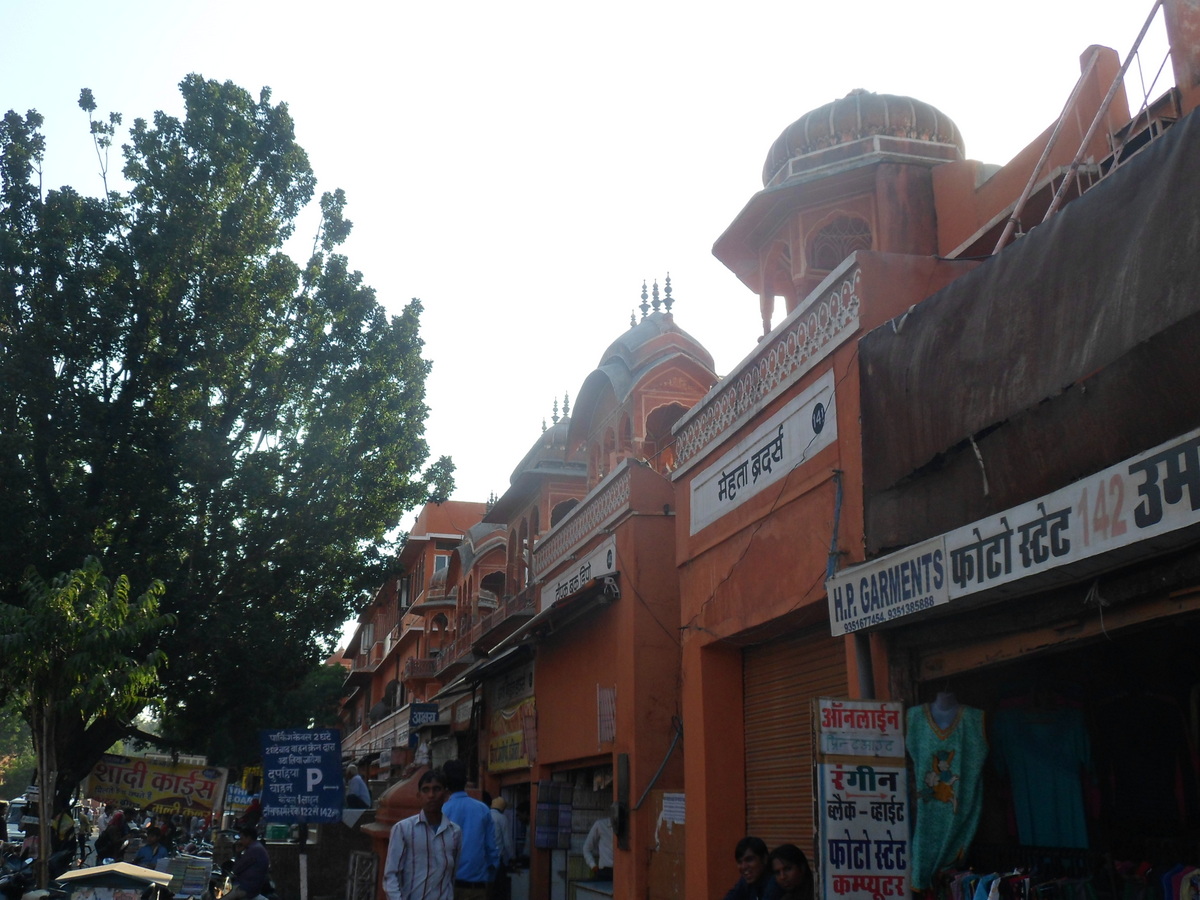Journey to the East 2013
Marco Polos fabulous journey to the East left wild dreams in my mind since I was reading it as a child. Herrmann Hesses "Journey to the East" did so some years later, as well a a picture book about the Himalayan - the roof of the world. And finally after a long winter the snow melts. Now Kathrin and I are ready to venture out to a long bike journey - to hopefully meet a lot of friendly people and face incredible landscapes and colorful cities from here to the Himalayan.

- Details
- Category: Journey to the East 2013
The road on the 20 kilometres from Rishikesh to Haridwar is rather busy. Settlements - not much to see from a National Park. A tree grows out of the head of a Shiva statue. In Haridwar we mingle through the crowded mall with our bicycles. After a brief look at the famous Ghats at the mighty Ganga river, we arrive at the train station. Bicycles are generally no problem on Indian trains. The luggage manager takes care of the obligatory paperwork. Obtaining the required hand painted tin plates and wrapping rugs around luggage and bikes takes a bit of time. Then the bikes are put away in the luggage room, and later loaded into the luggage compartment of the train. We still have plenty of time before our night train leaves for Jaipur. The regular sleeper wagons with the grilled windows look like gauntly jail houses from the platform. Jealously we linger in front of the illuminated AC class wagons. When the light is eventually switched on, we occupy our beds. The train ride becomes fairly pleasant, despite the notorious tea sellers strolling through the wagons and advertising their goods all night, or the snoring.


The early morning ride through the still sleeping metropolis is nice. We cycle along the orange painted city walls and gates. The architecture here in Rajasthan is so much different from the one in Uttarkand or Himajal Pradesh. The old buildings feel so much more playful with the small Jharokha balconies or Chhatris (small dome shaped pavilions on the roofs) and various other decorative elements.




After a while, we check in at 'Ratan Niwas', a comfortable and charming hotel two kilometres away from the old city. Walking in the afternoon through the crowed alleys of the old town feels like running a gauntlet. Every rickshaw driver demands a dozen arguments why we don't hire him to get around. Beggar kids and drum sellers linger in front of the tourist sights. And the horns of the heavy traffic accompany the movie. Briefly I notice the famous Palace of the Winds.
On the following day we cycle the few kilometres to the famous 400 year old Amber Fort. The giant construction sits on a dry hill slope above a lake. Behind the tall outer walls the building is rather a palace than a fort, with fine mix of Rajastan and Islamic architecture. Tiled squares, gardens and stone pavilions occupy the four big courtyards. The courtyards were used for different occasions such as official meetings, family ceremonies or to host the harem. The many Indian tourists take their chances to get photographs with the few western tourists. Back on the rooftop of our hotel we enjoy a cold beer for sunset while the muezzins nearby calls for prayer.



For 5 days I manage to stay (or rather sit) in the Vipassana centre near Jaipur. That is - no conversation with the 80 fellow students, 4 AM wakeup and 12 hours meditation interrupted only by a few meal breaks. The focus is supposed to remain on the sensation of the breath breath entering and leaving the nostrils. No exercises, no Yoga, no writing nor reading - an attempt to tame the waterfall of thoughts that runs through my brain. Peacocks trumpet in the park between the huts. Large silver gray Hanuman langurs occupy the branches and dance on the ribbed roof of the meditation hall. After some intense lectures in Hindi and English over squeaky speakers,I feel brain-washed and decide to abort the course. Just to find out I've been tricked by my own mind. However, Kathrin is still in the hotel in Jaipur and happy to see me again. Unfortunately, she didn't get any interview appointment in Switzerland, yet booked a return flight. Yes - we will be back with our families for Christmas! Later that evening, Kathrin brings the guitar to the rooftop, and we sing a lot of Cat Stevens songs with Mimi, the beer drinking lady from Finland.
There are still 10 days to kill until our flights depart. A small squeaky bus brings the three of us to Pushkar, a small pilgrim town 200 kilometres away. Pushkar is famous amongst Hindus for its small lake that washes away all sins, and for the only Brahma temple in India. Lots of old palaces surround the lake. The town is famous with European cloth sellers too. Every winter they come for a few days or months to stock up with colourful shirts and trousers and scarfs that are produced in nearby villages. Kathrin and I find us a hotel with ground level rooms in a green and quiet garden. The garden is quiet as long as the Macacues and Langurs in the branches of the trees don't drive the three German Shepard's on the ground mad. Time passes by while we stroll around the Ghats that surround the small lake, or ride camels for sunset. Pushkar becomes the first place of our journey where we actually have to buy drinking water (elsewhere, hotels usually provided filtered water).






The last station of the long journey becomes Agra. We take a train from Jaipur that slowly saunters through lime green rice paddies and hopeless slum areas where children play in piles of burning litter. The smell and the scenario sink into the memories...
The arrival in Agra becomes a fuzz. The bicycles did not arrive with our train. The luggage manager in the train station remains unmoved and calmly informs us that our bicycles might be on the next train, or the train after the next train. So we have to manoeuvre our bulky bags by hand through the station into a rickshaw, and return to the train station at night after a few desperate beers. When two young man pull our unlocked bicycles out of the last train, we are really happy.
On the following morning we visit the 400 year old Taj Mahal. Built by a Mughal emperor in grief for the death of his wife, the white marble mausoleum became the symbol for eternal love. The mighty dome on top of the octagonal main building between four 40 meter tall minarets is vaguely illuminated by the blur light of a misty sunrise, and mirrored in the long pond in front of the building. Big Iwans (niches) with rich decorations were built into the walls of the mausoleum. The white marble walls are decorated with inlay works - poems and Quran texts, and stucco flower garlands. Inside the hall, colorful gemstones were used for exquisite inlay works. In the centre under the dome, behind delicate Jalis (perforated stone windows), lay the sarcophagus of the emperor and his beloved wife.
As the morning lingers on, the steady flow of tourists increases. Time to leave Taj Mahal. Time to leave India after two and a half months. Last but not least - it is time to end our eight months long "Journey to the East" - with many big thanks to everyone who supported us on our way from Europe to India. Love, light and peace be with you.


